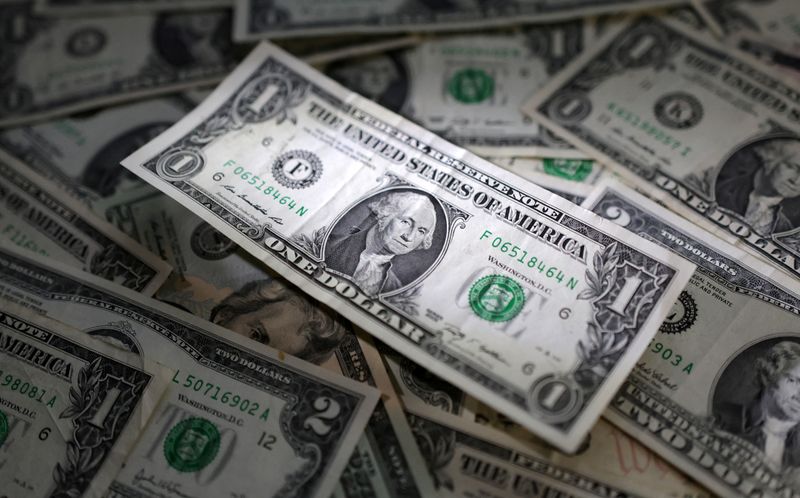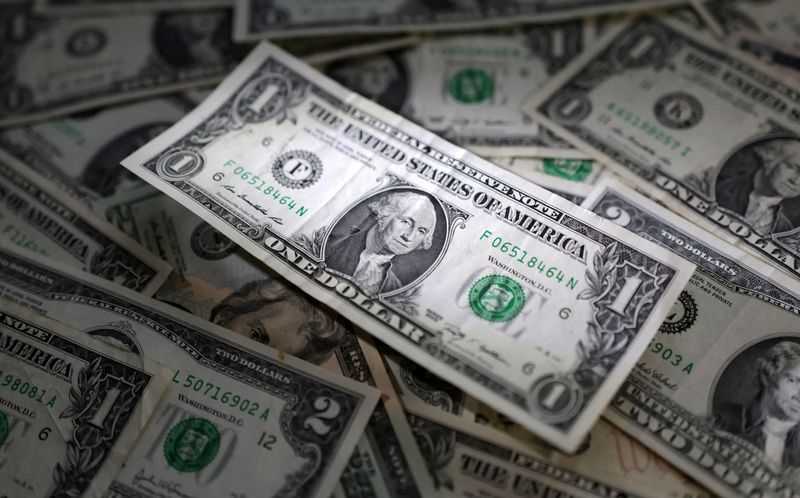
By Stefano Rebaudo and Wayne Cole
(Reuters) -The euro dropped on Monday versus a strengthening U.S. dollar on growing concerns about a possible government collapse in France, which would stall plans to curb a burgeoning budget deficit.
The risk premium investors demand to hold French debt rather than benchmark German bonds jumped after France’s far-right National Rally (RN) president Jordan Bardella said his party would likely back a no-confidence motion in the coming days unless there were a “last minute miracle”.
Leading RN lawmaker Marine Le Pen has given Prime Minister Michel Barnier until Monday to meet her party’s budget demands.
The euro fell 0.65% to $1.0506.
“French politics looks to be belatedly playing a role in forex and driving some euro underperformance,” said Chris Turner, head of forex strategy at ING.
Most analysts still reckoned that Le Pen didn’t want to bring down the government as she could be blamed for a financial and economic crisis in France.
“Yet it looks like the pressure may stay on the euro with a potential no-confidence vote coming on Wednesday,” added Turner, after flagging that ING economists think RN would not make the government collapse.
The yield spread between French and German 10-year government bonds – a gauge of the premium investors demand to hold French debt – rose 5 basis points (bps) to 85 bps after hitting 90 bps last week, its highest level since 2012, during the euro area’s sovereign debt crisis.
The U.S. dollar rose as President-elect Donald Trump marked a shift from his prior advocacy of a weaker dollar by demanding that BRICS member countries commit to not creating a new currency or supporting another currency that could replace the dollar or face 100% tariffs.
The U.S. dollar index – a measure of its value against the main currencies — rose 0.6% to 106.39.
It recorded on Friday its first weekly fall since September 2023 as the so-called Trump trade faded.
The Chinese yuan quickly slipped to a 4-1/2-month low at 7.2856 per dollar .
“Given the continued resilience of the U.S. economy and a worsening outlook elsewhere, we don’t think this is the start of a deeper setback for the dollar,” said Jonas Goltermann, deputy chief markets economist at Capital Economics.
“But the bar for a further shift in expected interest rates in favour of the U.S. in the near term is quite high,” he added. “A period of consolidation into year-end looks to us like the most likely scenario, although the risks remain skewed in favour of the dollar over the course of 2025.”
Key to the outlook for rates will be the November payrolls report due Friday where median forecasts favour a rise of 195,000 following October’s weather and strike-hit report, which could also be revised given a low response rate for that survey.
The jobless rate is seen edging up to 4.2%, from 4.1%, which should keep the Federal Reserve on course to cut by 25 basis points on Dec. 18.
Markets imply a 65% chance of such an easing, though they also only have two more cuts priced in for all of 2025.
A host of Fed officials are due to speak this week, including Fed Chair Jerome Powell on Wednesday, while other data include surveys of manufacturing and services.
YEN PARES GAINS
The dollar regained 0.3% on the yen to 150.18, having shed 3.3% last week in its worst run since July. Support lies around 149.47 with resistance at 151.53.
Over the weekend, Bank of Japan Governor Kazuo Ueda said the next interest rate hikes are “nearing in the sense that economic data are on track”, following figures showing Tokyo inflation picked up in October.
Data out Monday showed business investment running at a healthy 8.1% clip in the third quarter, encouraging markets to price in a 63% chance the BOJ will hike by a quarter point to 0.5% at its policy meeting on Dec. 18-19.

Barclays (LON:BARC) economist Christian Keller said data on labour earnings this week should show a further pick-up and all the signs were pointing to another strong “shunto” wage round in February.
“The wage and inflation picture continues to support further rate hikes, though whether the BOJ moves in December or January remains a close call,” he added.
This post is originally published on INVESTING.




